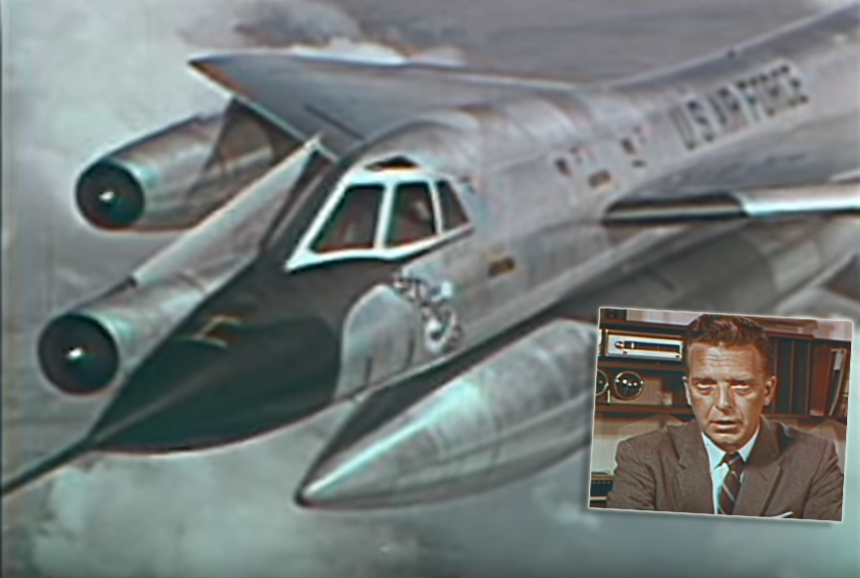Straight from the Cold War.
The one below is an interesting ’60s propaganda movie about the Convair B-58 Hustler whose purpose was to raise the awareness of the Americans about the U.S. Air Force operations (“jet noise is the sound of freedom” kind of message) and, above all, to scare the Soviets with footage of the Strategic Air Command‘s first supersonic bomber capable of Mach 2.
Although it may seem ages away, the basic procedures used half a century ago during the Cold War are more or less the same that would be used today by the current U.S. fleet of heavy bombers.
The B-58 Hustler
Powered by four General Electric J79 engines housed in underwing pods and featuring a large delta wing design, the Convair B-58 Hustler was the first operational bomber capable of reaching Mach 2. Developed in the 1950s for the Strategic Air Command (SAC) of the U.S. Air Force, the B-58 first flew on November 11, 1956, and entered service in March 1960. Throughout the 1960s, it operated with the 43rd Bombardment Wing at Carswell Air Force Base, Texas, and the 305th Bombardment Wing at Bunker Hill AFB, Indiana (later renamed Grissom AFB after Lt. Col. Virgil I. “Gus” Grissom, a native of Mitchell, Indiana, and one of the original Mercury astronauts who died in the Apollo 1 fire in January 1967).
Convair built 116 B-58s, including 30 test and pre-production aircraft and 86 operational units.
The B-58, the first supersonic bomber, had a slender fuselage that precluded internal bomb storage. Consequently, it carried a droppable, two-component pod beneath the fuselage that housed a nuclear weapon along with additional fuel, reconnaissance equipment, or specialized gear. The aircraft, manned by a pilot, navigator/bombardier, and a defense systems operator, featured a sophisticated inertial guidance navigation and bombing system, a slender “wasp-waist” fuselage, and heat-resistant honeycomb sandwich skin panels in the wings and fuselage. It also had an escape module, famously tested on March 21, 1962, with a 2-year-old black bear named “Yogi” ejected during tests of the escape capsule.
Originally, the B-58 was designed to fly high and fast to evade Soviet interceptors. Besides its strategic role, its high speed enabled it to set world speed and altitude records and win five different aviation trophies.
By 1963, the B-58 had set 19 world speed records. On October 16, 1962, B-58 61-2059, crewed by Major Sidney Kubesch, Major John Barrett, and Captain Gerard Williamson, flew supersonically from Tokyo to London, spending five hours at supersonic speeds and setting five world records. Earlier, on January 14, 1961, it set three international speed and payload records by flying a 1,000-kilometer course at 1,284 MPH, earning the crew the Thompson Trophy. On March 5, 1962, it won the Bendix and Mackay trophies by flying from Los Angeles to New York at an average speed of 1,214.71 MPH and then returning at an average speed of 1,081.77 MPH. The B-58 ultimately won multiple trophies, including the Bleriot, Thompson, Mackay, Bendix, and Harmon trophies.
Despite being considered one of the most intriguing and attractive bombers ever, the B-58’s operational career was relatively short. The fleet’s phaseout began at the end of 1965 when the Soviets introduced highly accurate surface-to-air missiles, rendering the B-58’s high-altitude attack profile less effective against advanced Soviet defenses. Additionally, it was more expensive to operate than other bombers like the enduring Boeing B-52 Stratofortress and had a high rate of accidental losses. These factors led to the B-58’s retirement on January 31, 1970, after a decade of service, and its replacement by the FB-111.
H/T to Leonardo Ferrazzi for the heads-up









